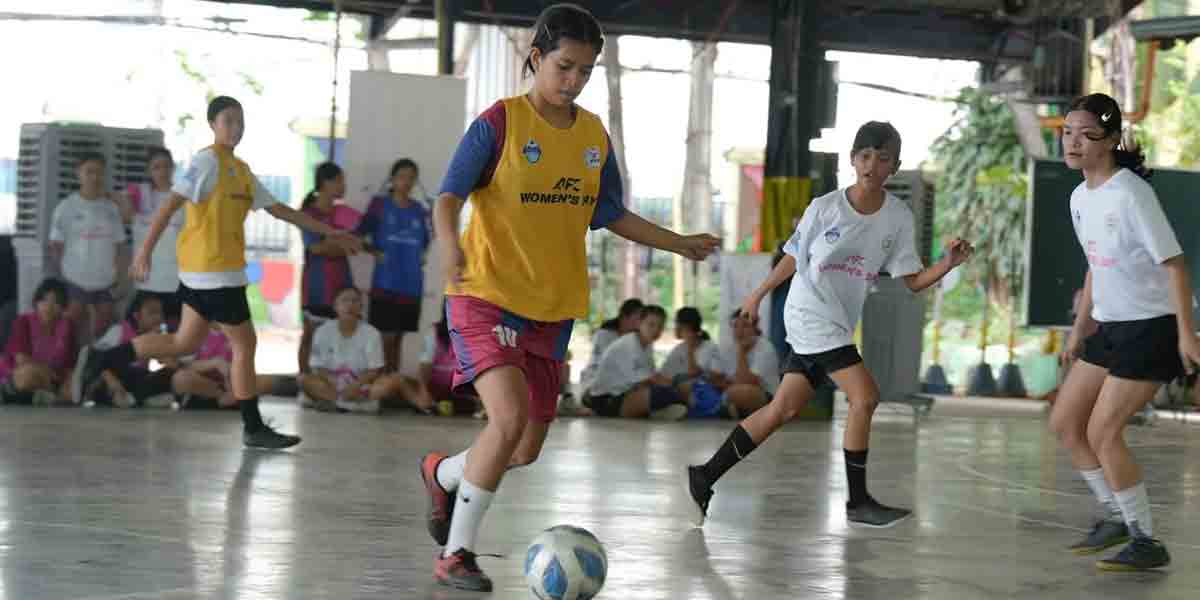Science and technology (S&T) research initiatives on aquaculture yield key findings as presented during the 2023 National Science, Technology, and Innovation Week (NSTW) at the Iloilo Convention Center on November 22, 2023.
Natural Growth Promoting Feed Supplement for Sustainable Aquaculture
Dr. Rex Ferdinand M. Traifalgar of the University of the Philippines Visayas (UPV) discussed various natural growth-promoting feed supplements. He explained food fish shortage as a national dilemma with the current fish production lacking an estimate of 1.4 million tons annually to feed the country.
Food fish shortage is apparent due to the stagnant and declining catch from commercial and municipal fisheries, with aquaculture being the main contributor to the total volume of fish production at 41%. Furthermore, he emphasized that aquaculture is the future.

Soybean meal is an imported commodity and an important protein source for aquafeeds that primarily dictate the increasing costs of the Philippine aquaculture practices. Dr. Traifalgar presented that biotechnology through fermentation of sweet potatoes as an alternative to soybean meal can lessen aquaculture costs and increase aquaculture production. This, he added, will aid to the dilemma of food fish shortage.
His research experimented that sweet potatoes with an initial 1-6% protein content, when fermented and developed will increase to 18-40%. This biochemical composition of fermented sweet potato is called ProEnk.
Feeding trials on milkfish, tilapia, and shrimp (Pennaus vannamei) using the ProEnK showed that the fermented sweet potato could substitute 50% of soybean meal with survival rate, weight gain, and feed conversion ratio showing significant difference with the commercially available aquafeeds. The Omega 3 (good fatty acids) and Omega 6 (bad fatty acids) ratios found in the feeding trials have significantly improved.
Dr. Traifalgar also mentioned a few projects that experimented on other bioactive feed additives through experimental diets including Durivillaea potatorum Fucoidan (Australia), Ulva lactuca, Peptidoglycan, and Chitin. These projects were all funded by the Philippine Council for Agriculture, Aquatic and Natural Resources Research and Development of the Department of Science and Technology (DOST-PCAARRD).
Microbial biomass fermentation studies, added Dr. Traifalgar, pose sustainable feed protein in aquaculture. Based on the promising results of using bioactive feed additives, these could further boost the productivity, efficiency, and profitability of aquaculture.
Biofloc-based Nursery Tank Production of Shrimp
Results and new technology initiatives on Biofloc-based nursery tank production of shrimp and the Innofloc technology were also presented in the forum.
Dr. Christopher Marlowe A. Caipang of UPV mentioned that among the major shrimp-producing countries, the Philippines has the highest annual growth rate of 12% from 2013 to 2020. Due to the popular demand for shrimp, it is being widely cultured in the country. However, the production of shrimp is threatened by infectious diseases, poor water quality from the source, and decreased production due to the pandemic.

With this, Dr. Caipang explained the need to develop new culture technologies and innovate existing technologies like Biofloc technology (BFT) in nursery tanks or ponds. The BFT technology expanded to integrate a nursery phase wherein shrimps are stocked in nursery tanks for 30 days before transferring to the grow-out ponds.
This technology is known as Innofloc or Innovative Biofloc Technology in Shrimp Farming. Using such tanks will ensure upgraded biosecurity, better management, and quality shrimp. The new nursery tank technology ensures 4–5 harvests per year compared with the straight culture of shrimps in ponds with only 3 harvests per year. Innofloc technology results in increased productivity during the shrimp’s grow-out phase. Through this technology, the discharge of effluent to the waterways is expected to reduce gradually.
Pond-based Culture System of Eel (Anguilla marmorata)
Dr. Isagani P. Angeles, Jr. of Isabela State University (ISU) discussed pond-based culture systems of eels. Dr. Angeles noted Region 2 as the major source of glass eel or ‘igat,’ which is the most promising fish species found in the Philippines. However, the glass eel industry in the region is yet to be established. At least 8 species of eel are currently found in the Philippines namely: Anguilla marmorata, A. celebesensis, A. japonica, A. bicolor pacifica, A. luzonensis, Monopterus albus, A. interioris, and A. borneensis. He also mentioned that 40% of eel farms in the Philippines are owned by Filipinos.

Dr. Isagani P. Angeles, Jr. presented his experiences in pond-based culture systems of eel at 2023 NSTW. (Image credit: ACD, DOST-PCAARRD)
Culture facilities such as concrete tanks, canvas tanks, and concrete ponds are among the ongoing developments of the eel industry in the country. Technologies used in terms of aerators for eels are airstone diffuser, perforated pipe, and paddlewheel. Most eel farmers do not use any filtration system for ponds but some utilize biofiltration or mechanical filtration. Other facilities that could be potentially installed in eel farms are generator, deep well, and solar-powered water pump and aeration system.
In terms of water quality in ponds, the preferred water temperature is warm/ambient at around 25–30°C. During the stocking of glass eels, especially during transportation, cold water temperature is preferred to reduce stress levels.
Dr. Angeles highlighted the current constraints and issues experienced by the eel industry, such as the sustainability of resources, habitat management, regulations and management measures, and economic potential. However, the main problem faced by the industry is the inadequate source of low-cost feeds for eels.
All speakers emphasized the need for a national policy direction to further advance and guide the aquaculture industry. Researchers and research managers must follow a common direction to attain sustainability in aquaculture.
Titled “The Future of Fish Farming: A Dive into Sustainable Aquaculture Techno Forum,” the open-for-all forum was organized by DOST-PCAARRD’s Inland Aquatic Resources Research Division (IARRD). It was conducted in celebration of the 2023 NSTW to discuss the developing projects and research innovations in attaining sustainable aquaculture. (Reinier Josef D. Abagat, DOST-PCAARRD S&T Media Services)






















